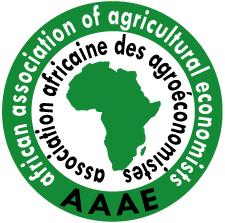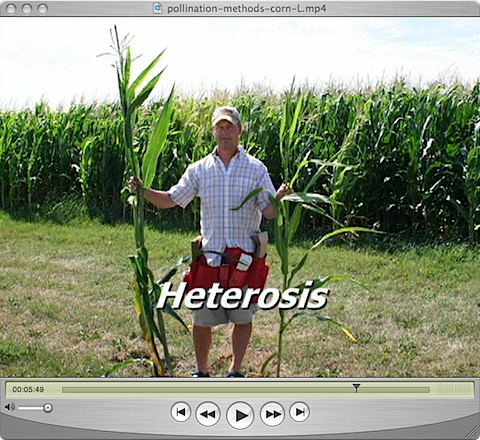- Italians rescue forgotten grape varieties for new varietals. Diciamo “cin cin”.
- Eat up all your beets.
- LEISA magazine tells us about making soils better.
- Maps of malnutrition in Ecuador. Where are the agrobiodiversity maps to mash with them, Andy?
- “If we were to look at improving the height of children, rather than the weight, we might be able to improve this situation.”
- NatGeo video on coca marketing in Bolivia.
Psst! Wanna breed corn?
Karl J. Mogel from Inoculated Mind dropped us a note: “as part of my graduate school research, I’m making educational videos about plant breeding, and I just uploaded the first of them to my program’s website. Please consider linking to it in one of your blog posts.”
My pleasure!
So, off I went to the University of Wisconsin Madison’s web site to see. 1 I couldn’t actually see a video there, but no matter, there were instructions for how to deal with that problem, and pretty soon I found myself watching Karl’s effort.
Climate change and Africa
 I haven’t read Climate change and poverty in Africa: mapping hotspots of vulnerability, and nor am I likely to find the time to do so any time soon. But judging from the write-up at Eldis this paper from the African Journal of Agricultural and Resource Economics will be of interest to those who find this sort of thing interesting. The paper “uses a broad-brush analysis at the continental level to identify areas or ‘hotspots’ that are already vulnerable and likely to suffer substantial impacts as a result of climate change.”
I haven’t read Climate change and poverty in Africa: mapping hotspots of vulnerability, and nor am I likely to find the time to do so any time soon. But judging from the write-up at Eldis this paper from the African Journal of Agricultural and Resource Economics will be of interest to those who find this sort of thing interesting. The paper “uses a broad-brush analysis at the continental level to identify areas or ‘hotspots’ that are already vulnerable and likely to suffer substantial impacts as a result of climate change.”
The authors conclude that these results argue against large ‘magic bullet’ approaches and favour smaller, better targeted local approaches and interventions. Considerable future work is needed to refine the hotspots analysis and increase the resolution of impact studies, and thus contribute to a better understanding of the issues facing millions of people who depend on natural resources for their livelihood.
I wonder how that squares with other approaches to vulnerability in Africa, like the models of our pal Andy Jarvis and those of David Lobell?
Nibbles: Policy, Brazil nuts, Kenyan sugarcane
- Food security, or food capacity?
- “Brazil announces plan to become world’s granary.” We don’t make this stuff up, you know.
- Might Kenya turn against Tana delta biofuel boondoggle?
Cold comfort for rice growers
Cold water can depress rice yields.
At high elevations in Nepal, farmers re-route cold water from the main valley rivers to raise the water temperature before irrigation so as to induce earlier flowering and timely maturation of their rice cultivars (Rana et al. 2000).
From Ecosystems and Human Well-Being: Policy Responses: Findings of the Responses Working Group (Millennium Ecosystem Assessment) page 148.
In California, after a dam cooled down their irrigation water and a lengthy negotiation, a handful of rice growers will get:
anywhere from $1 million to $3 million a year, depending on the price of rice
From Department of Water Resources warms up to rice growers’ needs.
You figure it out; I can’t. Via.
